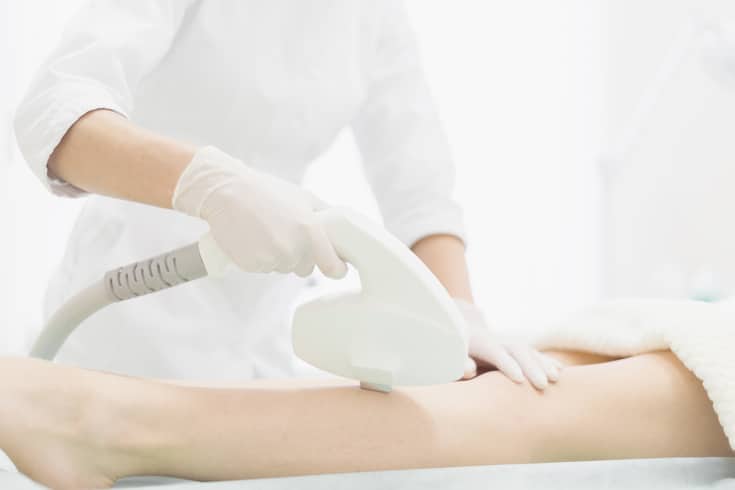Medical Advertising for Hair Removal and Legal Regulations: An Explanation by a Lawyer on the Japanese Medical Practitioners Act

Recently, we have been seeing medical advertisements frequently on television, newspapers, and the internet. These medical advertisements are regulated under the ‘Japanese Medical Practitioners Act’. In June 2018 (Heisei 30), the revised ‘Japanese Medical Practitioners Act’ was enforced, and even websites that were not previously subject to regulation became regulated.
Advertisements for ‘hair removal’, which can be considered a medical practice depending on the equipment used, the practitioner, and the location, are also subject to the revised ‘Japanese Medical Practitioners Act’.
Therefore, in this article, we will clearly explain the legal regulations and points to note for advertisements related to ‘medical hair removal’ to which the ‘Japanese Medical Practitioners Act’ applies, and other hair removal treatments.
Legal Definition of Hair Removal (Medical Hair Removal, Cosmetic Hair Removal, Self Hair Removal)
While the term “hair removal” is used broadly, it is actually classified into three categories: “medical hair removal,” “cosmetic hair removal,” and “self hair removal.” Each category differs in terms of ① method and effectiveness of hair removal, ② practitioners and locations, and ③ cost.
What is Medical Hair Removal?
① Method and Effectiveness
Medical hair removal involves directing a laser beam or other powerful light energy at the root of the hair, destroying the hair papilla and sebaceous gland openings, among other things, to remove hair.
Because the irradiation of laser beams and the like involves the destruction of hair roots and surrounding hair-producing tissues, the effects of medical hair removal are longer-lasting than other methods, and it is sometimes referred to as “permanent hair removal.”
In Japan, there is no clear definition of permanent hair removal, so the definitions of the FDA (U.S. Food and Drug Administration) or the AEA (American Electrology Association) are used as references. However, neither definition guarantees that hair will never regrow, but rather that the hairless state will continue for a certain period of time.
② Practitioners and Locations
Medical hair removal is a medical procedure, so it is performed by licensed doctors and nurses in medical institutions such as clinics and hospitals. One of the advantages is that treatments can be tailored to each individual’s skin type and condition, and immediate response is possible in case of severe pain or complications.
③ Cost
While the cost per treatment is higher than for cosmetic or self hair removal, the high effectiveness of medical hair removal means that fewer treatments are needed to achieve the desired results. Therefore, the total cost may not differ much from cosmetic hair removal for certain areas.
What is Cosmetic Hair Removal?
① Method and Effectiveness
Cosmetic hair removal uses a light hair removal device with a weaker irradiation power compared to medical hair removal. It slows down the growth of body hair without destroying the surrounding tissue of the hair root cells. Because the treatment causes less irritation and pain, it can be performed at short intervals even on people with sensitive skin.
While cosmetic hair removal does not remove hair, it can be expected to have a “hair suppression effect,” which makes the hair thinner and less noticeable, and a “hair reduction effect,” which suppresses the growth of new hair.
② Practitioners and Locations
Cosmetic hair removal, which is not a medical procedure, does not require a license to perform, and is carried out by estheticians at beauty salons. The light hair removal device used has a weak irradiation power, so skin trouble is less likely to occur. However, if skin trouble does occur, it can be difficult to respond because it is not a medical institution.
③ Cost
Compared to medical hair removal, the cost required for one treatment is quite inexpensive. However, because the effect is weak and the duration is short, more treatments are required, and the total cost is not much different except for full-body hair removal, which covers a wide range.
What is Self-Hair Removal?
①Method and Effectiveness of Hair Removal
Self-hair removal (excluding waxing and tape hair removal) involves the use of commercially available home light hair removal devices. However, these devices have a lower output compared to those used in beauty salons, resulting in weaker hair removal effects and shorter durations of effectiveness.
②Operator and Location
Self-hair removal is typically performed at home by the individual using the light hair removal device. However, it is also possible to use self-hair removal salons that provide light hair removal devices and charge on a time basis.
③Cost
While there is a cost to purchase the light hair removal device, the cost of hair removal is almost negligible, making it significantly cheaper compared to medical hair removal or beauty salon hair removal. However, you will have to bear the cost if parts replacement or repairs are needed.

Regulatory Expressions for Medical Hair Removal Advertising
When advertising medical hair removal, it is necessary to check in advance whether the following items from (A) to (O) apply, and what points need to be taken into consideration.
(A) Determining Whether It Constitutes Medical Advertising
Advertisements for medical hair removal are considered medical advertising if they meet the following two criteria:
① They appear to be aimed at attracting patients (Attractiveness)
② They can identify specific medical institutions such as doctors, hospitals, or clinics (Specificity)
What Constitutes Medical Advertising
- Advertisements related to specific medical institutions
- Even if it is stated that “This is an article based on an interview and is not intended to attract patients,” anything that includes the name of a medical institution
- Even if the name of the medical institution is not displayed due to the advertising regulations of the ‘Japanese Medical Practitioners Act’, anything that can identify a medical institution through an address, phone number, URL, etc.
- Even if it is an introduction to a treatment method, anything that refers a specific medical institution when contacted at the contact information provided
- Advertisements within the homepage of a specific medical institution
- Anything else that meets the requirements of ① and ②
What Does Not Constitute Medical Advertising
- Anything that does not emphasize all medical institutions that handle medical hair removal
Even if the content introduces multiple medical institutions, such as “Recommended Hair Removal Clinic Selection” or “Recommended Hair Removal Clinic Ranking,” it is considered medical advertising if it emphasizes a specific medical institution.
- Academic papers, academic presentations, etc.
If it is deemed that the purpose is to attract customers to a specific medical institution by sending direct mail to an unspecified number of people under the guise of academic papers, etc., it is judged to have “attractiveness.”
- Articles in newspapers or magazines, etc.
Articles in newspapers and magazines, etc. are not considered to meet the “attractiveness” requirement, but if a medical institution pays advertising fees, etc. to request the publication of an article for the purpose of attracting customers, it is judged to have “attractiveness.”
- Testimonials, memoirs, etc. posted by patients themselves
Even if patients, etc. publish memoirs recommending a specific medical institution based on their own experiences, they do not meet the “attractiveness” requirement. However, if the author is requested by a medical institution or receives a reward such as money, it is judged to have “attractiveness.”
In addition to the above, in-house postings, pamphlets distributed in-house, and articles related to the recruitment of medical institution staff do not constitute medical advertising.
(I) Is only the information that can be advertised included?
If it falls under medical advertising, the items that can be advertised are detailed in Article 6-5, Paragraph 3 of the Japanese Medical Practitioners Act. Specifically, there are 14 items of “advertisable information” including the following:
- Being a physician or dentist
- Name of the medical department
- Items to display the name, phone number, and location of the hospital or clinic, as well as the name of the hospital or clinic administrator
- Whether there are consultation days or consultation hours or whether consultations are available by appointment
- If the hospital or clinic, or the physician or dentist, has been designated to provide certain medical care based on the provisions of the law, that fact
(The rest is omitted)
If you want to know more about the items that can be advertised, please see the detailed article below in addition to this article.
https://monolith.law/corporate/medical-advertising-charts[ja]
(III) Whether the requirements for including information other than “advertisable matters” are met
Under the Japanese Medical Practitioners Act, medical advertisements other than “advertisable matters” are prohibited. However, if all of the following ① and ② (for private medical treatment, ① to ④) are met, limited lifting of the ban is permitted and advertising becomes possible.
① The information is necessary for making appropriate choices about medical care, and it is advertised on websites or similar platforms that display information sought and obtained by patients themselves
It is important that the information is “sought by patients themselves”. This includes newsletters and pamphlets, but banner ads and advertisements on social media that are displayed regardless of the patient’s intent do not meet this requirement.
② Clearly indicate a contact point or other method for patients to easily inquire about the content of the information displayed
It is important that patients can “easily inquire”. Therefore, difficult-to-understand displays such as extremely small text do not meet this requirement. The “contact point” can include a telephone number, email address, or the URL of a contact form.
③ Provide information about the content and cost of treatment normally required for private medical treatment (in the case of advertising for private medical treatment)
For “content and cost of treatment”, simply providing the name of the treatment, an insufficient explanation of the treatment content, or the cost alone does not meet this requirement. It is necessary to post the content of the treatment normally required, the standard cost, the treatment period and number of times, and to provide patients with appropriate and sufficient information in an easy-to-understand manner.
④ Provide information about the main risks and side effects related to the treatment for private medical treatment (in the case of advertising for private medical treatment)
If only the advantages and strengths are emphasized and the information about the main risks is insufficient, this requirement is not met. It is necessary to post information about the main risks and side effects in an easy-to-understand manner and to provide appropriate and sufficient information. Also, difficult-to-understand displays or posting on pages linked to do not meet this requirement.
(E) Items Prohibited by the Japanese Medical Practitioners Act and its Enforcement Regulations
Under the Japanese Medical Practitioners Act and its Enforcement Regulations, the following types of advertisements are prohibited in medical advertising:
- Advertisements containing false information (False Advertising)
- Advertisements claiming superiority over other medical institutions (Comparative Superiority Advertising)
- Exaggerated advertisements that can mislead people (Exaggerated Advertising)
- Advertisements with content that goes against public order or good morals (Advertisements Contrary to Public Order and Morality)
- Advertisements based on subjective experiences or hearsay from patients, etc., regarding the content and effects of treatment
- Advertisements featuring before or after photos of treatment, etc., that could potentially mislead patients, etc., about the content and effects of treatment
- Advertisements with content that degrades dignity, or content that is prohibited by other laws and regulations
(O) Checking for expressions that may violate the Japanese Premiums and Representations Act and the Specified Commercial Transactions Act
Prohibited actions under the Japanese Premiums and Representations Act
- Superiority Misrepresentation
Displaying or suggesting that the quality, standards, or other aspects of a product or service are significantly superior to the actual product or service, or falsely claiming that they are significantly superior to those of competitors.
- Advantage Misrepresentation
Displaying or suggesting that the quality, standards, or other aspects of a product or service are significantly more advantageous than the actual product or service, or falsely claiming that they are significantly more advantageous than those of competitors.
- Designations by the Prime Minister
Designations by the Prime Minister regarding matters related to the transaction of goods or services that may cause general consumers to misunderstand.
Among the designations by the Prime Minister, the following displays related to “bait advertising” can be problematic in relation to hair removal:
- Displaying products or services that are not ready to be provided
- Displaying products or services without clearly stating the limitations, such as the quantity available, despite such limitations
- Displaying products or services with no intention of actually conducting a transaction, or when there is no reasonable reason but the transaction is hindered
Prohibited actions under the Japanese Specified Commercial Transactions Act
- False Advertising
Displaying or suggesting something about the quality, standards, or other aspects of a product or service that is different from the truth.
- Exaggerated Advertising
Using expressions that mislead people into believing that the quality, standards, or other aspects of a product or service are significantly superior or advantageous compared to the actual product or service.
If you want to know more about exaggerated advertising, please refer to the following article in addition to this one.
https://monolith.law/corporate/hype-penalties[ja]

Regulations on Advertising Expressions for Beauty Hair Removal
(A) Check if there are any expressions that may be considered as medical practices or could be mistaken as such
Terms that can only be used for medical hair removal, such as “laser hair removal”, “medical hair removal machine”, “permanent hair removal”, and expressions that give the impression of being a medical act, such as “treatment”, “therapy”, “medical”, “medical care”, cannot be used.
(B) Check if there are any expressions that violate the Japanese Premiums and Representations Act or the Japanese Act on Specified Commercial Transactions, etc.
Similar to medical hair removal, expressions that violate the prohibitions under the Japanese Premiums and Representations Act or the Japanese Act on Specified Commercial Transactions, etc. cannot be used.
Regulations on Advertising Expressions for Self-Hair Removal
(A) Check for any descriptions that may lead to misunderstandings about efficacy and effects
Just like in cosmetic hair removal, you cannot use terms that are only applicable to medical hair removal such as “laser hair removal”, “medical hair removal device”, “permanent hair removal”, and expressions that give the impression of a medical procedure like “treatment”, “therapy”, “medical”, and “medical treatment”.
Also, expressions that could be mistaken for the efficacy and effects of medical hair removal, such as “hair removal”, “destroying the hair papilla”, “hair will not grow back”, are prohibited.
(B) Check for any expressions that fall under the Act against Unjustifiable Premiums and Misleading Representations (Japanese Premiums and Representations Act) and the Act on Specified Commercial Transactions (Japanese Specified Commercial Transactions Act), etc.
Just like in medical hair removal, expressions that fall under the prohibited acts in the Act against Unjustifiable Premiums and Misleading Representations (Japanese Premiums and Representations Act) and the Act on Specified Commercial Transactions (Japanese Specified Commercial Transactions Act), etc. are not allowed.

Summary
When advertising hair removal services, it is crucial to identify whether the targeted hair removal falls under ‘medical hair removal’, ‘cosmetic hair removal’, or ‘self hair removal’, and carefully proceed to ensure that none of the prohibitions for each category are violated.
Since many laws such as the ‘Japanese Medical Practitioners Act’, ‘Japanese Medical Practitioners Act Enforcement Regulations’, ‘Japanese Act against Unjustifiable Premiums and Misleading Representations’, and ‘Japanese Act on Specified Commercial Transactions’ are involved in hair removal advertisements, it is recommended to consult with a lawyer who has extensive knowledge and experience in this field, rather than making a decision on your own.
Introduction to Our Firm’s Measures
Monolith Law Office is a legal office with high expertise in both IT, particularly the Internet, and law. In recent years, the need for legal checks surrounding online medical advertisements has been increasing. Our firm analyzes the legal risks associated with businesses that have already started or are about to start, based on various legal regulations. We aim to legalize the business as much as possible without stopping it. Details are described in the article below.
Category: General Corporate





















